Enchanted Rock: A Hike Through a Unique Environment in Texas
A Day Trip from Austin - issue # 49
We recently returned from a trip to Austin. Though we’ve been visiting the city often in the past three years, we always find new places to explore there.
Over time, we visited the Inner Space Caverns for a geological highlight and the San Antonio Missions for a colonial history lesson.
We timed one of our trips to coincide with the Maya Meetings at the UT, where we attended a lecture by David Stuart, a respected Mayanist and epigrapher.
Last year, we visited in April at the height of the spring bloom season, and enjoyed the gorgeous bluebonnets and other wildflowers at several outdoor destinations in the city.
My favorite time to visit is spring. The area in and around Austin is teeming with wildflowers, and everything is much greener and more colorful than the desert where I live!
Though in early May the gorgeous bluebonnets were no longer blooming, different wildflowers added a splash of bright color to the surroundings.
The most common among them in the park was the tiny plains coreopsis, growing in clusters, showcasing its bright yellow and dark red combination. Also known as golden tickseed, calliopsis, and coreopsis tinctoria (scientific name), its intense color stood out from the surrounding grasses.
Its color is not only for show, though. It is also great for dyeing, used traditionally by the Zuni to dye yarn. In fact, the word tinctoria in its name refers to this quality (tinctus in Latin means to color, to dye). Besides its coloring property, it is also used as tea.
At first glance, Enchanted Rock didn’t seem much different than our desert environment. A barren rock dome with little vegetation, sticking out from its surroundings, was similar to other places in the Desert Southwest we often visit.
We laughed when we noticed the heat warning: temperatures during midday would reach 81 degrees (Fahrenheit). In and around Phoenix, a heat warning means temperatures at or over 100 degrees. Even though we didn’t consider 81 degrees dangerous, we still had a full water bottle with us, wore sunscreen, and hats when we set off on our hike up the pink-ish dome.
As we walked on and around it, we noticed the rock had layers, like an onion, composed of sheets of granite ranging in thickness from one inch to several feet. The reason it is called an exfoliation dome.
Considered one of the largest in the US, this dome is a relatively tiny outcrop of a giant granite rock expanding outward and downward for miles under the surface of the Earth.
One billion years ago, this granite was a large pool of magma (hot liquid rock), miles below the surface. As it pushed up into the rock above, it cooled and hardened, turning into granite.
These pushed-up areas became Enchanted Rock and the surrounding smaller domes, with names like Turkey Peak, Little Dome, and several others.
Over time, as the surface rock and soil wore away, the granite expanded, causing the dome to split and the outer layer of rock to break into smaller pieces and slide off. This process, causing the onion-layer effect, continues even today.
As for the color, it is only partially due to its content of several minerals.
The pink color is due to the lichens (pronounced “likens”) growing on the granite. They are not a single plant, but two separate organisms, a fungus and an alga, growing together, extremely slowly (some patches of lichen could be a thousand years old!).
They are more important than just adding color to the rock. Since they get most of their nutrients from the surrounding atmosphere, they are bioindicators: they can alert us to a change in air quality.
Though most people who visit Enchanted Rock State Natural Area summit the dome, which rises 425 feet above the base elevation of the park, the park offers plenty of other opportunities for hiking and exploring.
Since it was sunny, we looked for vegetation and shade, instead of trying to summit the dome. Once we walked halfway up the rock, we took the Eco Canyon trail towards Moss Lake.
We walked through a riverbed and continued along the base of the huge rock dome. It was much quieter here, away from the summit trail everyone was on.
Without realizing it, we missed a turn and followed the Base Trail surrounding the dome.
We enjoyed this trail just as much, flanked by low-growing bushes and trees. The blooming prickly pear cacti with their gorgeous flowers reminded me of our own Sonoran Desert surroundings.
Lizards ran away from the trail, startled as we got closer. Squirrels ran up and down the tree trunks, and huge vultures flew overhead.
I often stopped to listen to birdsongs and used my new birding app, MerlinID, to identify the canyon and rock wrens, northern cardinals, and black-crested titmice, based on their song. I didn’t need the app to identify the northern mockingbird, also present, since we hear its song daily near our home.
I stopped to admire several tiny round islands of vegetation on the surface of the rock. I thought they may be soil islands I read about, also known as vernal pools, weathering pits, and gammas. These patches of vegetation on bare rock develop in depressions formed by weathering over thousands of years.
Eventually, we realized we were on the wrong trail (though any trail was a good one to explore) and turned around to get back on our original destination trail leading to Moss Lake.
The lake and its surroundings were drastically different from the desert-like environment near the rock dome. The trees were taller, offering more shade, and the small lake showcased some of the prettiest waterlilies in bloom.
A red-eared slider was swimming towards the shore, while giant dragonflies fluttered near the waterlily pads.
On a (relatively) hot sunny day in early May, sitting on the lakeshore was more pleasant than summiting Enchanted Rock would’ve been. And we still experienced the environment surrounding the giant dome.
As enchanting as the rock was, I still wondered about its name. Was it really as simple as being named for its beauty?
We only experienced the area during daylight and left long before nightfall, but I learned that it is a very different place at night. And not only because it is a perfect place for stargazing, as an International Dark Sky Place.
I read about mysterious lights flickering on the rock, accompanied by haunting groans and creaks in the dead of the night.
Superstition abounds about these lights and sounds, though we have perfectly reasonable scientific explanations for both. The layers of rock, expanded by heat during the day, emit these eerie sounds when they cool at night. As for the lights, they might be the moonlight reflecting off crystals in the granite.
As logical as the scientific explanation is, supernatural explanations, myths, and legends are still talked about. I find them more fun, since they add a layer of human history to the place, showcasing our collective imagination.
These otherworldly explanations named the rock “enchanted”.
The local Comanche and Tonkawa tribes both feared and revered the rock, and they told many ghost stories and supernatural tales about it.
According to one legend, a band of warriors, the last of their tribe, defended themselves on the rock from the attacks of other tribes. They were eventually defeated and killed, and their ghosts have haunted Enchanted Rock ever since.
The protagonist of another legend is a Native princess who threw herself off the rock when she saw her people being slaughtered by enemies. Her spirit still haunts Enchanted Rock.
Another tale talks about a chief whose spirit walks the summit forever as a punishment for sacrificing his daughter. I haven’t seen them, but indentations on the summit are supposed to be his footprints.
The presence of the Spanish conquistadors added another set of legends.
A romantic story talks about a young Spanish soldier who rescued his true love just as Comanches were about to burn her at the base of the rock.
Another story by the Tonkawa talks about a captured Spanish conquistador, who escaped them by hiding in the rocks. Swallowed by the rock, he was reborn as one of the locals, as he wove enchantments on the area.
Finally, European settlers added their own interpretations to Enchanted Rock. Their tales are treasure legends about lost gold mines and whole mountains of silver and platinum.
We are storytellers. Humans of all races, in every historical time, love to tell stories, especially when trying to explain the presence of something extraordinary. In this case, an enormous rock, sticking up from its surroundings, in a place where it seemingly doesn’t belong, emitting unexpected sounds and showing unexpected flickering lights.
While this rock might seem perfectly “at home” in the high desert of the Southwest, it seems out of place in the hill country of Texas, giving opportunities for legends. However, it is also a unique natural environment, worth protecting.
Regardless of science or legends, the park is a popular place for Texans and visitors alike (I heard a family speak French on the trail), who all enjoy the unique environment in this park.
Visiting Enchanted Rock also offers plenty of trails, both to summit the enormous rock and walk around it, enjoying nature while getting some exercise.
You can learn more about the park at its official website:
Enchanted Rock State Natural Area
and the website of the Texas State Historical Association:
Legends and Myths of Enchanted Rock
No matter where you are in the world, I hope you can go outside and enjoy a nearby natural preserve. Their importance for both the environment and our enjoyment is significant. I am always grateful for our public places, be it National Parks or local nature preserves, or any other protected natural areas. Hope you have one nearby. Let me know if you’ve visited it (and, of course, if you visited Enchanted Rock).
Until next time,
Emese
If you enjoyed this post, please give it a “like” and share it to help others find it, too.
If you came across it on Substack and you are not a subscriber, consider subscribing.
And, if you’d like to support me in a small way, I always appreciate a cup of coffee.
If you enjoyed this post, you might like these:


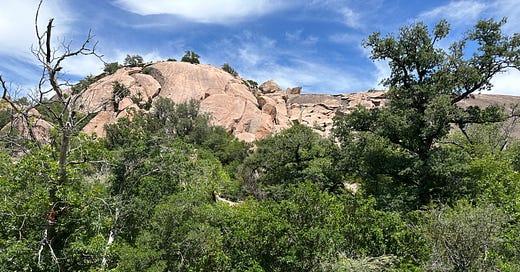





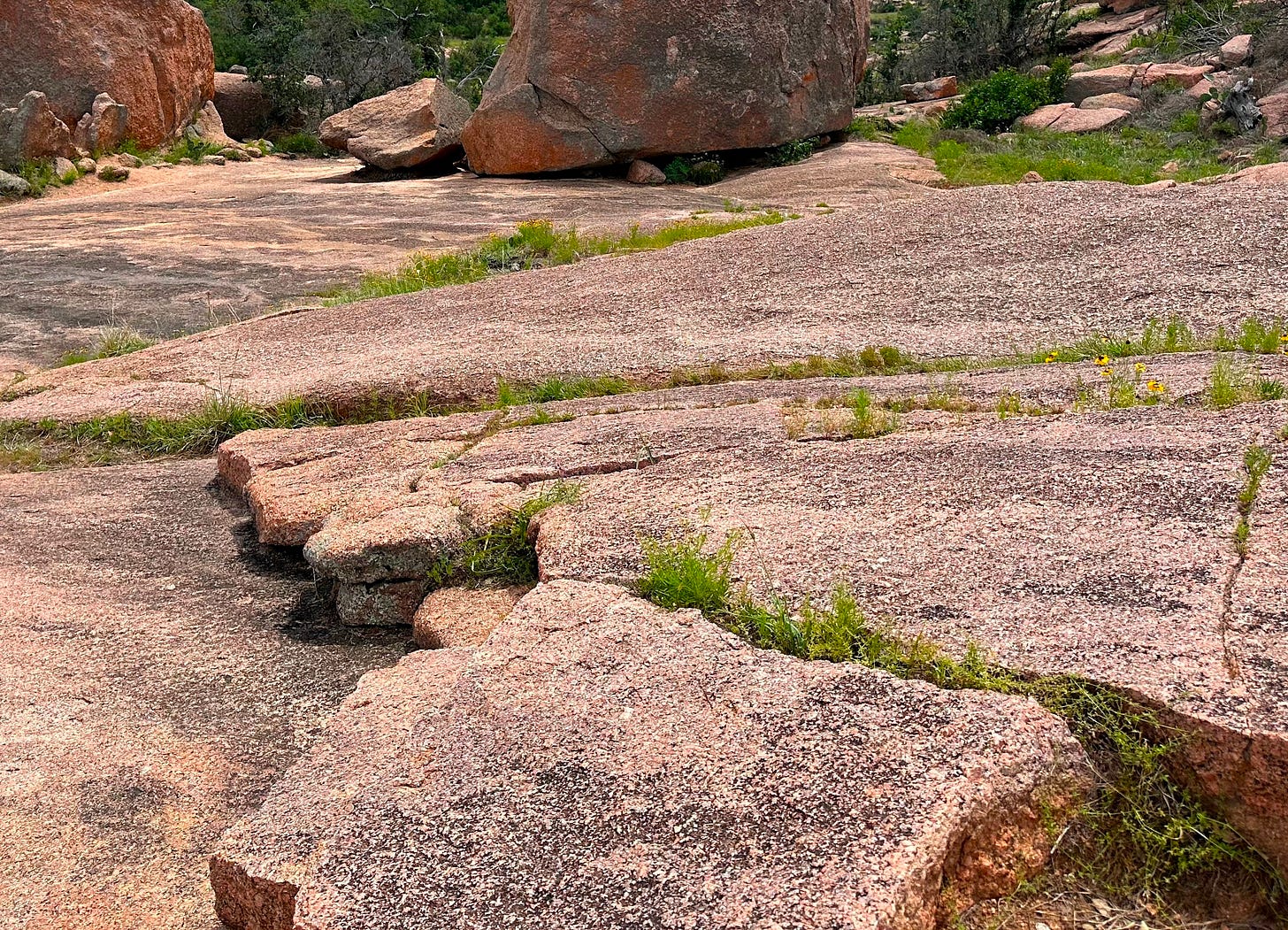
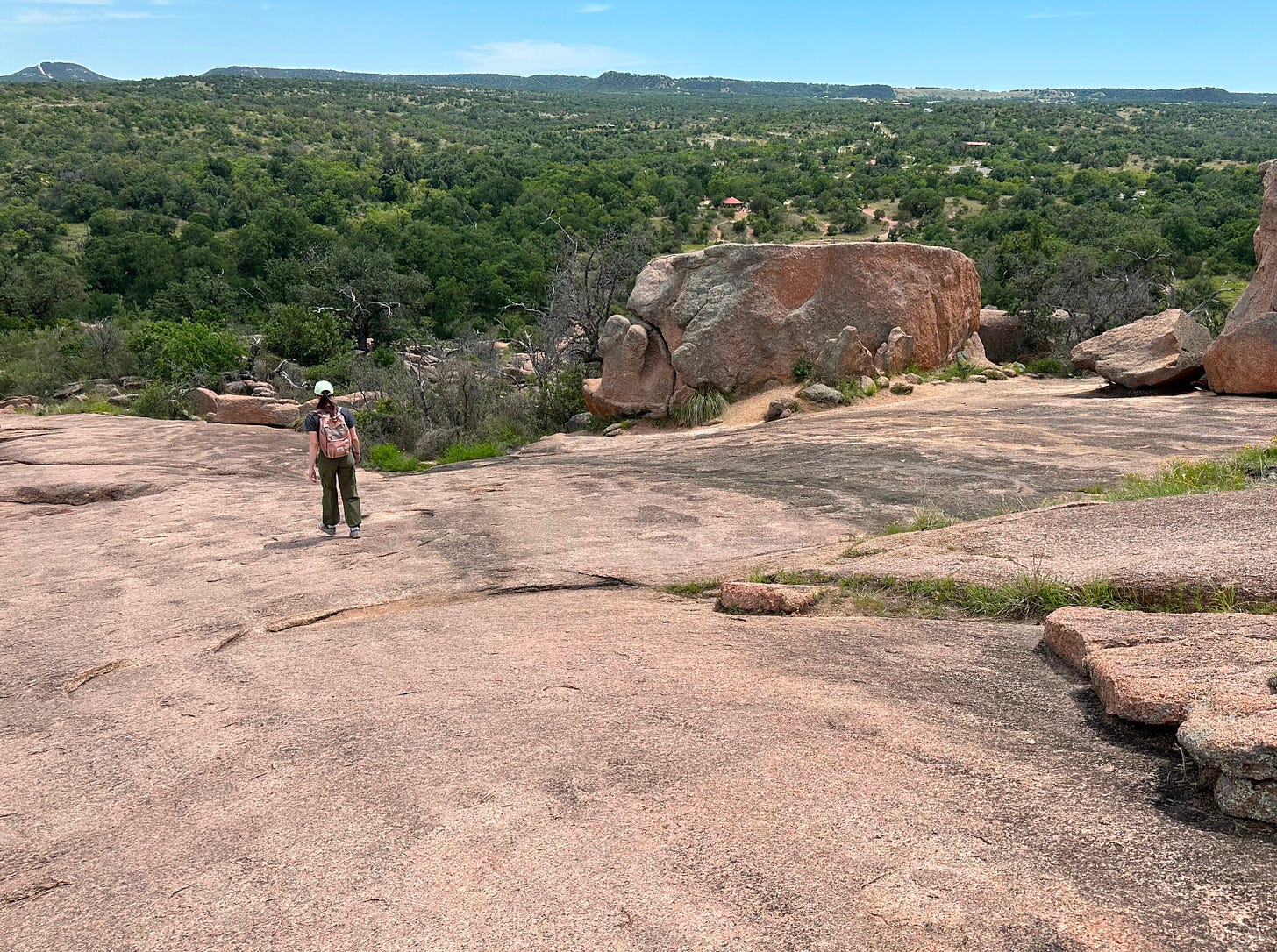



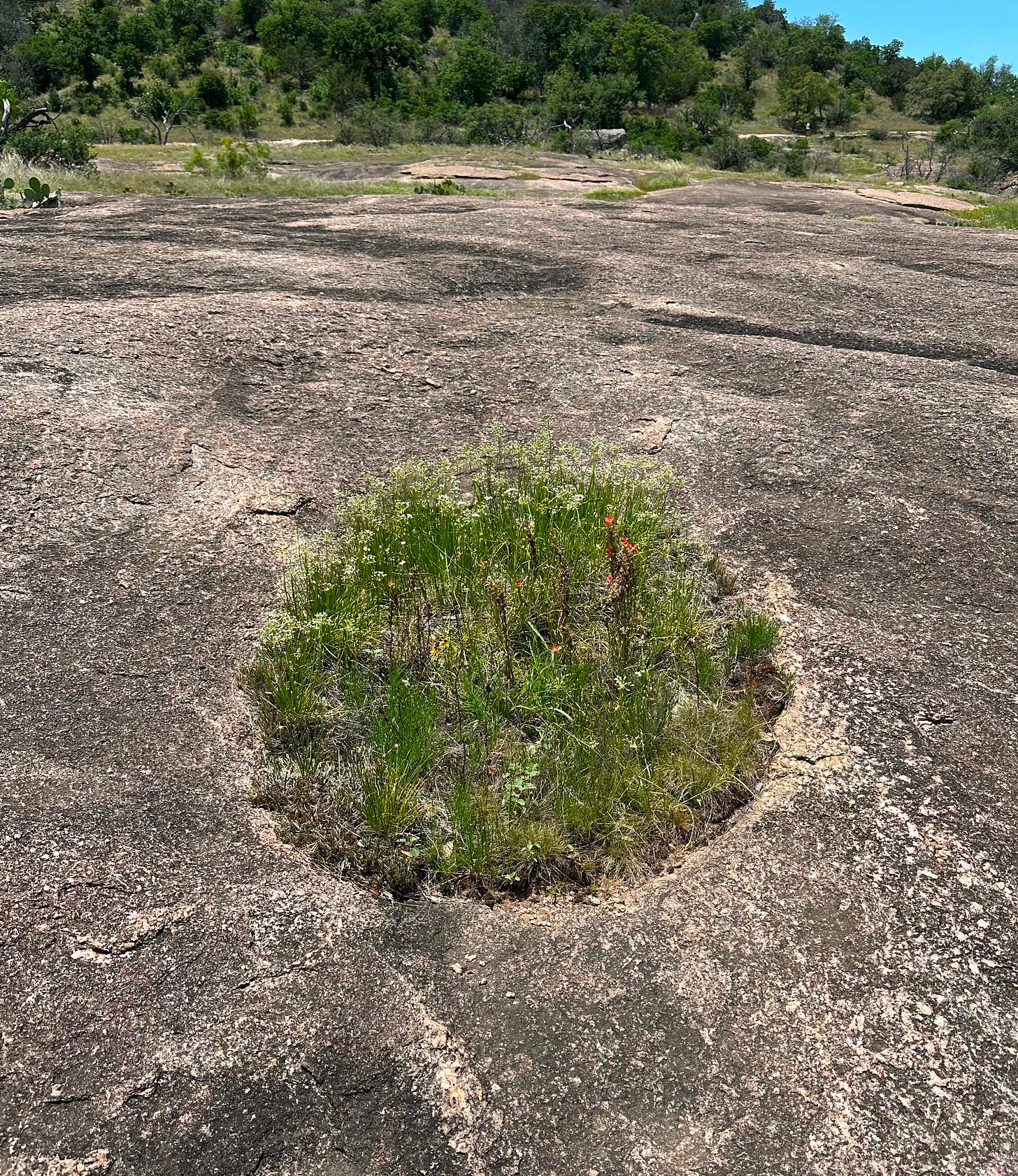

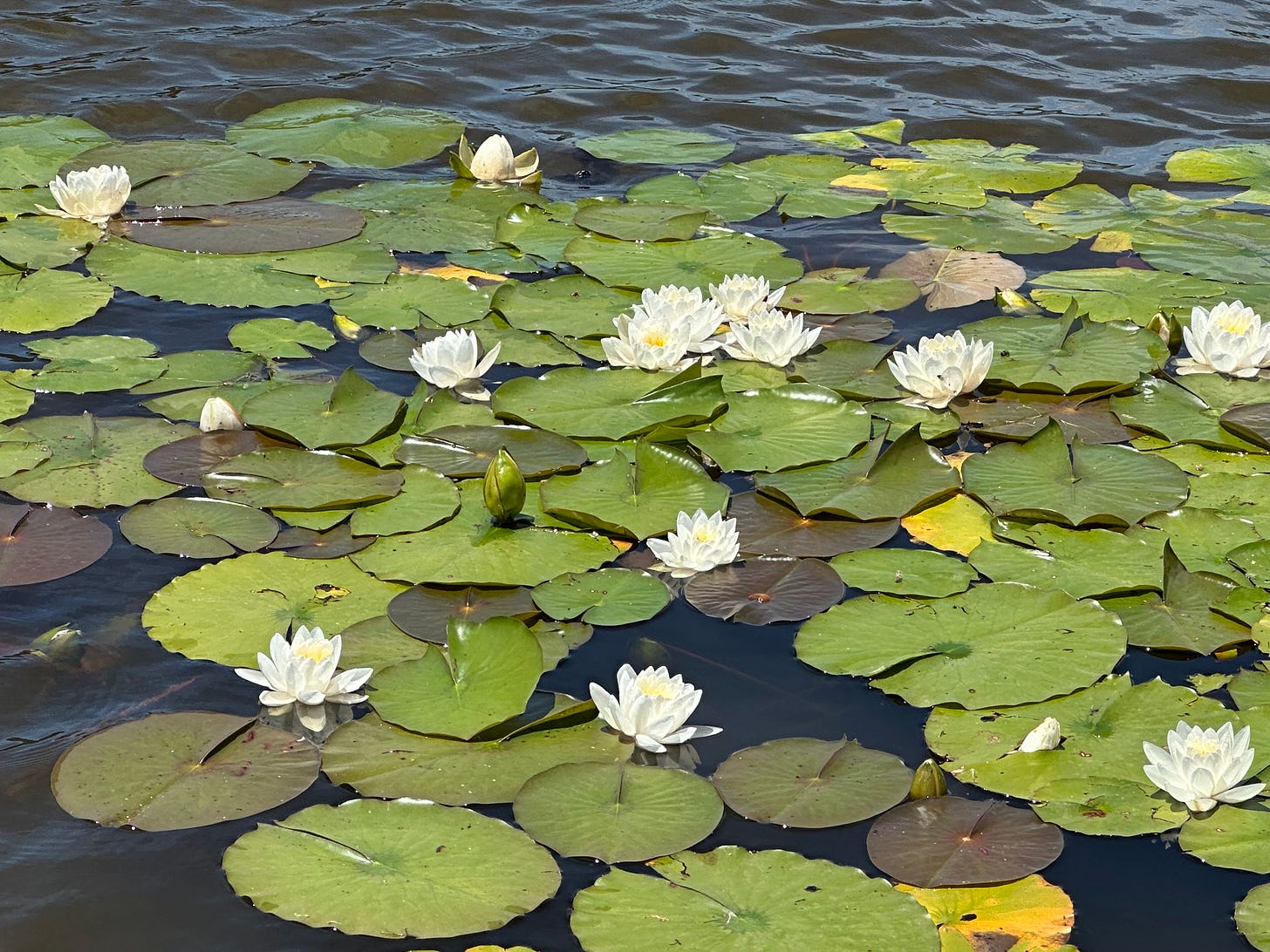

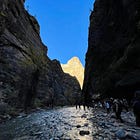
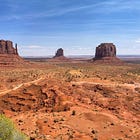
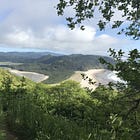
Wow, you got to hear David Stuart lecture, Emese! Must have been incredible. What was the topic or was it an overview? The rock color is beautiful and had no idea what created pink -ish rocks. I love the rock structures and pigments at Uxmal so much, and now I know why. (would it still be lichen in a more tropical, though dry, climate do you think)? Have you studied geology bc you have a very good working knowledge of it. Your photos and your hiking and adventuring trip sounded just right. Oh, and can't forget all the superstitions and stories. I love all those too.
Very cool! The photos are really crispy and I love the red-eared slider :) Also learning about the different legends and stories surrounding the rock are really interesting.